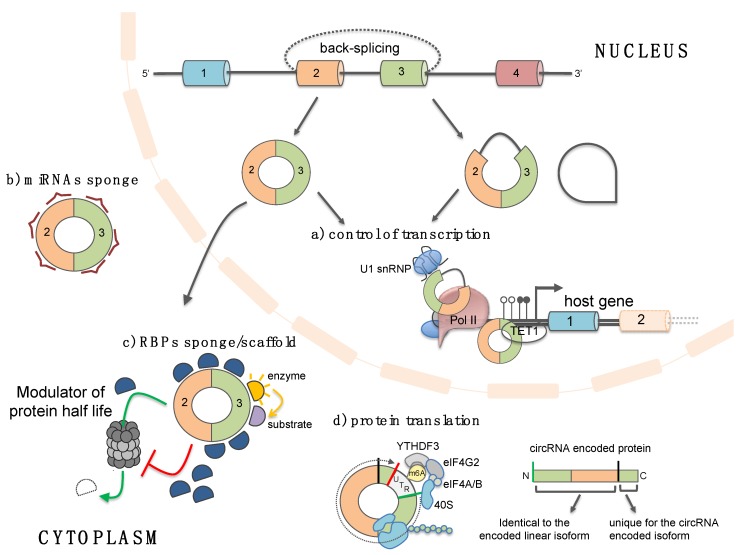Figure 3.
CircRNA functions. CircRNAs localized in the nucleus can function as a modulator of transcription of their host genes either by interacting with U1 small nuclear ribonucleoprotein (U1 snRNP) and enhancing the function of RNA polymerase II (Pol II) complex or by recruiting methylcytosine dioxygenase TET1 to the promoter region (a). When exported into the cytoplasm circRNAs can function as sponges or decoys for microRNAs and RBPs or alternatively can modulate the half-life of specific RBPs counteracting (red T line) or favoring their proteasome mediated degradation (green arrow) (b,c). CircRNAs have been shown to function also as protein scaffolds (c). By facilitating the colocalization of enzymes and their substrates are able to enhance the reaction kinetics (yellow arrow). Finally, circRNAs with internal ribosome entry site (IRES) elements and AUG sites (green line) may be translated through a CAP-independent mechanism (dashed arrow; red line depicts the STOP codon). This latter is promoted by the presence of methyl adenosine (m6A) and by the involvement of the reader protein YTHDF3 and the IRES-specialized translation initiation factor eIF4G2 (d). The protein isoform produced from circRNA translation will have part of the primary sequence in common with the linear encoded protein, while the rest of the polypeptide is unique for the circRNA encoded isoform.

